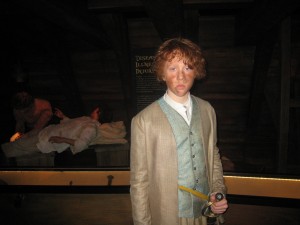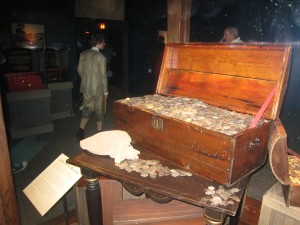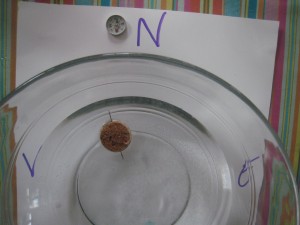Tag: science museum of minnesota’
Tornadoes, Lice and Muse
- by KitchenPantryScientist
Tomorrow, we’re heading out to see Tornado Alley at the Science Museum of Minnesota‘s omintheater. We’ll get to check out the TIV (Tornado Intercept Vehicle) and meet film maker and storm chaser Sean Casey while we’re there. You can meet him too from 12-2 on Sat. Sept.29 and Sun. Sept.30. I’m pretty sure we’ll be blown away.
My microbiology class just had a great field trip to the Minnesota Lice Lady. We looked at nits and lice through a microscope, learned about the parasite’s life cycle and heard that braids or a ponytail can keep your friends’ bugs from crawling over to your head. I’ll be posting soon about these little monsters!
Cricket magazine has been around for a long time, but I just discovered a kids’ science imprint called Muse magazine, for kids from 9-14, which I’ll be getting for every kid on my list this year! I have no affiliation with the magazine, but learned about it as the result of a science online meeting I’ll attend later this year. I’m co-moderating a session with Elizabeth Preston, who is the magazine’s editor and writes a great adult science blog called Inkfish.
Real Pirates and How to Make a Compass
- by KitchenPantryScientist
Last week at the Real Pirates exhibit at the Science Museum of Minnesota, I walked below deck on a mock pirate ship, hoisted a pirate flag (Jolly Roger), touched real pirate treasure and played dice with pirates. The bell of the Whydah, a 300-ton pirate ship greeted us, illuminated by lighting and suspended in a huge tank of water. I could almost imagine it spinning and tumbling to the bottom of the sea off the Massachusetts coast. 146 people aboard the ship drowned when The Wyhdah went down.

I was lucky enought to meet the treasure hunter-turned-historian Barry Cifford who discovered the wreck of the Whydah. He explained to us that pirate ships were true democracies, where crew mates were equal, no matter their background, age, race or religion. As a result ,many rushed to be pirates- whether they had escaped slavery, unjust society, or were just trying to make their fortune. The captain of the Whydah, Sam Bellamy, needed money to marry the woman he loved. There was even a 10-year old boy named John King aboard the Whydah when she went down…he left his mother to join the pirates. (My 11-year old claims he’d never do that.)
How did pirates navigate their way around the deep blue ocean well enough to ever utter the words “Land Ahoy?” In addition to maps and the stars, they used tools like the ones I saw from the Whydah: sounding weights to determine sea depth and ring dials to tell time. They also used compasses, simple tools for determining which direction North was, even in thick fog. A compass is an instrument containing a magnetized pointer that shows the direction of magnetic north, and you can easily make one with a needle, a magnet and a piece of cork or Styrofoam and a glass bowl (or pie plate) containing a few inches of water. Cut a slice of cork, maybe 1/2 inch thick) with a bread knife (see photo.) Then, magnify the metal in your needle by stroking it from one end to another with a magnet about ten times. (Go the same direction each time.) Push your needle through the cork or Styrofoam and gently set it in the bowl of water. The needle, which you have turned into a magnet, will line up with Earth’s magnetic field, which runs from the South Pole to the North Pole. It should point North and South if you magnetized it correctly!
Cut a slice of cork, maybe 1/2 inch thick) with a bread knife (see photo.) Then, magnify the metal in your needle by stroking it from one end to another with a magnet about ten times. (Go the same direction each time.) Push your needle through the cork or Styrofoam and gently set it in the bowl of water. The needle, which you have turned into a magnet, will line up with Earth’s magnetic field, which runs from the South Pole to the North Pole. It should point North and South if you magnetized it correctly!
Face to Face with Pharaohs at the Science Museum of Minnesota
- by KitchenPantryScientist
We wandered into the burial chamber. As I leaned closer to stare at the inlaid stone and intricate hieroglyphics on the golden coffinette, awestruck by the craftmanship, my son whispered in my ear, “Mom, King Tut’s stomach was in there.”

Coffinette at Science Museum of MN
Beside me, my five year old screwed up her eyes in concentration as she punched the numbers of the exhibit into her audio speaker before holding it to her ear, and my oldest daughter scanned the hierogyphics for birds and circled the sarcophagus of a royal cat. Even my husband, who claims to intensely dislike archeology, happily wandered from room to room reading about the pharaohs.
When I was nine, I saw the King Tut exhibit in San Francisco, stared into the eyes of the famous gold mask and fell in love. Egyptian art and artifacts are like Vincent Van Gough’s paintings. You don’t really understand what all the excitement is about until you stand in front of them. Some of the things I expected to be life-sized were diminutive, and it was shocking to see the large scale of some of the artifacts.
To my eyes, Egyptian art contains some of the most beautiful faces and figures, both animal and human, that I’ve ever seen. Even the shadows cast on the walls behind the statues are graceful and life-like.
Oh, and Harrison Ford narrates the audio tour as you walk through the tomb. Genius.
But this is a science blog, and I should talk about science. The final room of the exhibit is full of mummy science and contains a fascinating replica of King Tut’s mummy, X-rays and scans of the real mummy and some facts about DNA analysis they’ve done that has helped clarify the lineage of the great pharaohs. The Omnitheater film “Mummies, Secrets of the Pharaohs” is extremely interesting too and perfect for anyone that wants to know more about mummification, how they get DNA from mummies and what they hope to do with the information science reveals about the pharaohs.
The kids and I mummified apples last week to get a little insight into the science of mummification. I’ll post directions on how you can mummify your own apples tomorrow and demonstrate how to do it on Kare11 Monday morning, Feb.21st (President’s Day.)
Tutankhamun: The Golden King and the Great Pharaohs is at the Science Museum of Minnesota now. Don’t miss it!